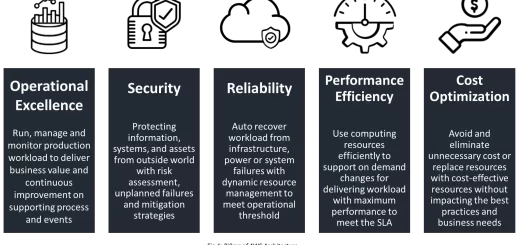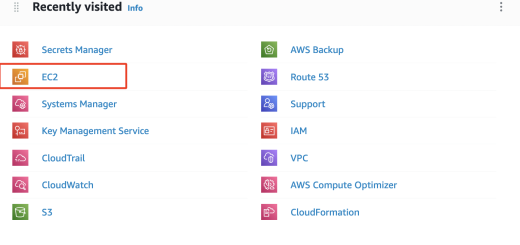Amazon Aurora Unveiled: A Game-Changer in Cloud Computing
Welcome to an in-depth exploration of Amazon Aurora, a revolutionary cloud database service. While the service shares some similarities with traditional RDS offerings, it brings a host of features to the table that set it apart. Designed as a fully managed relational database engine, Aurora is compatible with both Postgres and MySQL, offering a range of applications for diverse enterprise needs.
What is Amazon Aurora?
Amazon Aurora is a fully managed relational database engine compatible with both PostgreSQL and MySQL. It’s designed with a cluster-based architecture, consisting of:
- A primary database instance for read and write operations.
- Up to fifteen read replicas for scaling read workloads.
- A single, auto-scaling cluster volume for storage.
This architecture makes Aurora ideal for online transaction processing (OLTP) workloads, commonly found in CRM systems, SaaS products, and other applications requiring high throughput.

The Unique Storage Architecture of Amazon Aurora
Aurora’s primary database instance performs both read and write operations, all of which write to an underlying, self-healing cluster volume. This cluster volume utilizes a storage auto-repair mechanism that makes it incredibly resilient. Specifically, the cluster volume is composed of protection groups—logical groupings of 10GB blocks—that are allocated across three availability zones. If a failure occurs in one segment of the disk volume, the system will use data from other volumes within the cluster to perform automatic repairs.
Fault Tolerance
Aurora’s design ensures that it can lose an entire availability zone—one-third of its cluster volume—without compromising data integrity or availability. This robust architecture provides an extraordinary level of fault tolerance, further reducing the administrative burdens often associated with database management.
Administrative Ease
Managing Aurora is a straightforward process, thanks to features like auto-incrementing storage and managed cluster endpoints. Unlike traditional relational databases, Aurora offloads many of the tasks typically required by database administrators. Whether you are migrating from MariaDB, Oracle, or even other AWS offerings like RDS MySQL or RDS Postgres, transitioning to Aurora promises a smoother, more simplified management experience.
Cluster Endpoints
Aurora offers two main types of cluster endpoints: the primary endpoint, which resolves to the primary instance, and the reader endpoint, which resolves to any of the read replicas. These managed endpoints simplify the connection process, ensuring that you can easily distribute read and write operations across the cluster.
Why Choose Amazon Aurora Over RDS?
There are numerous advantages to choosing Amazon Aurora over traditional RDS:
- Auto-scaling storage: Adjusts in 10GB increments to meet your needs.
- No I/O provisioning: Simplifies storage management and scalability.
- Up to 15 read replicas: Enables massive horizontal scaling for read-heavy workloads.
- Improved performance: Faster recovery times and overall enhanced speed for both Postgres and MySQL.
Real-World Adoption
Companies are increasingly migrating to Aurora, driven by its ease of management, fault tolerance, and scalability. Whether you are looking for more read replicas, simplified storage management, or just a more reliable database solution, Aurora stands as a top contender for any organization requiring a relational database service.
Amazon Aurora Configurations
Aurora Serverless
Aurora Serverless is an auto-scaling configuration designed for unpredictable or intermittent workloads. It automatically scales up and down, based on your application’s needs. Users set a target utilization level in Aurora Capacity Units (ACUs), and the serverless configuration takes care of the rest.
When clients connect to a serverless cluster, they are actually connecting to a ‘proxy fleet.’ This fleet manages incoming connections and routes them to the appropriate database instances. As the workload changes, database instances are dynamically added or removed to meet target utilization levels.
Aurora Global Database
With Aurora Global Database, your cluster can span multiple regions. This configuration features a single primary writer region where the master data resides and up to five secondary read-only regions. One of the major advantages here is the ability to operate globally, as data replication between regions is automatically managed.
For businesses aiming for low-latency read requests on a global scale, this configuration is invaluable. It provides remarkable horizontal scalability for read workloads without requiring you to manage data replication.
Launching an Amazon Aurora Cluster
Now, let’s move on to the practical aspects. To begin, navigate to the AWS Management Console, and from there, proceed to the RDS service.
Engine Selection
The first step in the cluster creation process is engine selection. Amazon Aurora supports both MySQL and Postgres-compatible versions. You can also choose between provisioned capacity mode or the serverless configuration.
Replication Features
During setup, you have the option to enable single-master or multi-master modes. In multi-master mode, every instance in the cluster can accept both read and write operations, offering even greater flexibility.
Engine Version
While selecting the engine version, pay attention to Aurora version nomenclature. For instance, versions starting with “1.” are MySQL 5.6 compliant, whereas versions starting with “2.” are MySQL 5.7 compliant.
Additional Settings
Under the additional configuration options, you’ll find features unique to Aurora, such as the backtrack option and different types of parameter groups. You can also enable enhanced monitoring and export logs for more in-depth insights.
The Significance of Aurora Read Replicas
Aurora read replicas serve two purposes. First, they facilitate the horizontal scaling of your read workload. Second, they augment the system’s availability and fault tolerance. Should your primary writer instance fail, Aurora allows any of its 15 replicas to step up as the new primary writer, thus mitigating downtime.
Creating these replicas is straightforward. They connect to the same underlying cluster volume as the write node, facilitating speedy initialization. Aurora also enables auto-scaling policies on read replicas, offering elasticity to adjust to workload changes dynamically.
Elasticity and Scalability
An auto-scaling policy can scale your read capabilities up or down based on target metrics like CPU utilization or average connections. You also have the option to set a minimum and maximum capacity for these replicas. Aurora’s unique storage architecture minimizes concerns about replication lag in a single cluster, maintaining low latency usually under 100 milliseconds.
Multi-Scenario Replication
RDS MySQL to Amazon Aurora MySQL
One common use case involves creating an Aurora read replica of an Amazon RDS MySQL database. Generally employed for migration purposes, this method can be executed with near-zero downtime.
RDS Postgres to Amazon Aurora
Similarly, Aurora supports creating a cluster replica from an RDS Postgres source. This offers another migration path, achievable via the console, CLI, or API.
On-Premises to Amazon Aurora
If you’re not already using Amazon RDS, you’ll need to back up your source instance. Tools like MySQL dump or PG dump come in handy here. Once the backup has been imported into Aurora, replication resumes from the last binary log coordinates.
Amazon Aurora to Amazon Aurora
Replicating between two Aurora clusters often serves the purpose of data migration between Virtual Private Clouds (VPCs) or horizontal scaling. For cross-region replicas, you would typically employ native MySQL replication, making you susceptible to replication lag.
Monitoring Replication Lag Metrics
Understanding the nature of Aurora replica lag versus native replication lag is crucial. Aurora replica lag is rare and usually inconsequential, measuring between 10 and 100 milliseconds. Native replication lag, in contrast, can be a concern in highly concurrent or log-heavy environments.
Recap and Key Takeaways
- Aurora read replicas contribute to both scalability and availability.
- Auto-scaling policies provide flexibility and adaptability.
- Different replication methods suit varying use cases, including migration and cross-region data access.
- Replication lag metrics are vital for effective monitoring and management.
In conclusion, mastering the nuances of Aurora read replicas is essential, not only for day-to-day database management but also for the AWS certification exam. So, whether you’re concerned about high availability, seamless migration, or scalability, understanding Aurora replicas will equip you with the knowledge to make informed decisions.




Recent Comments